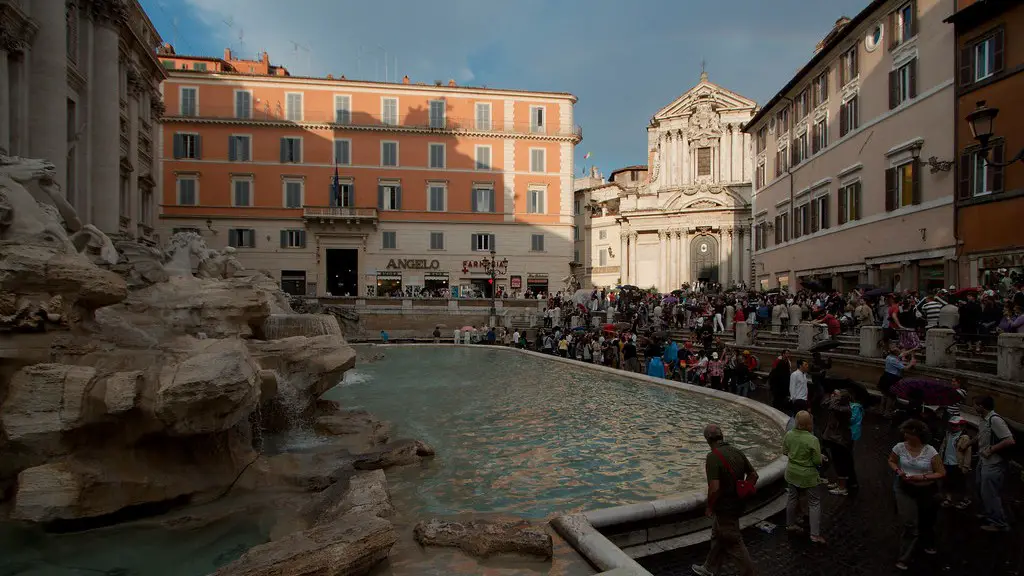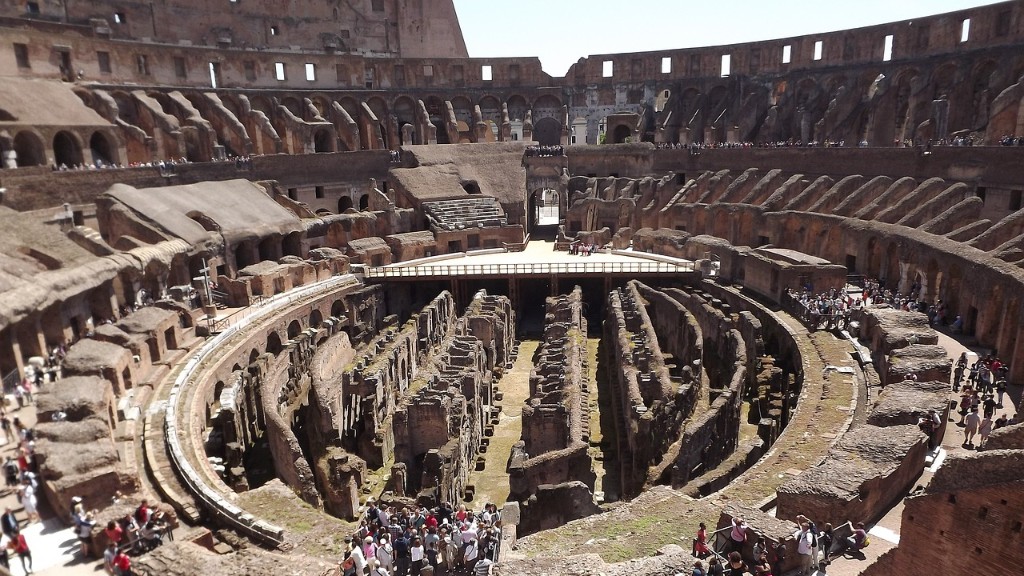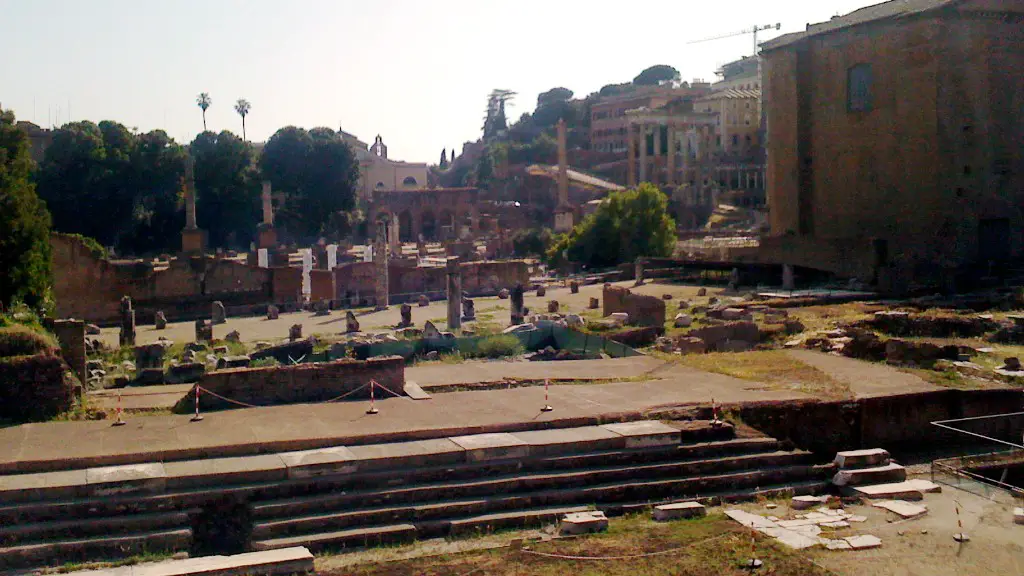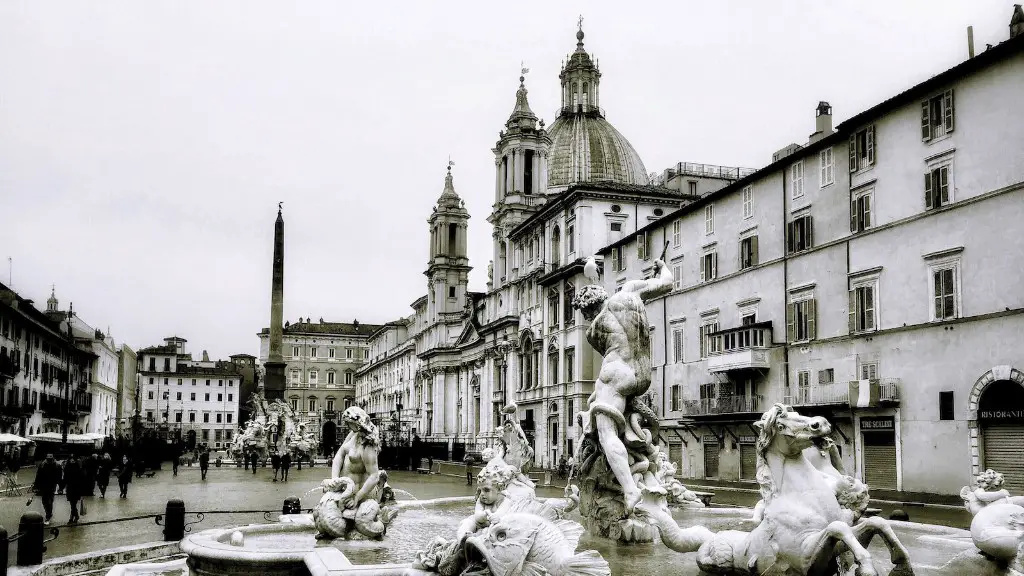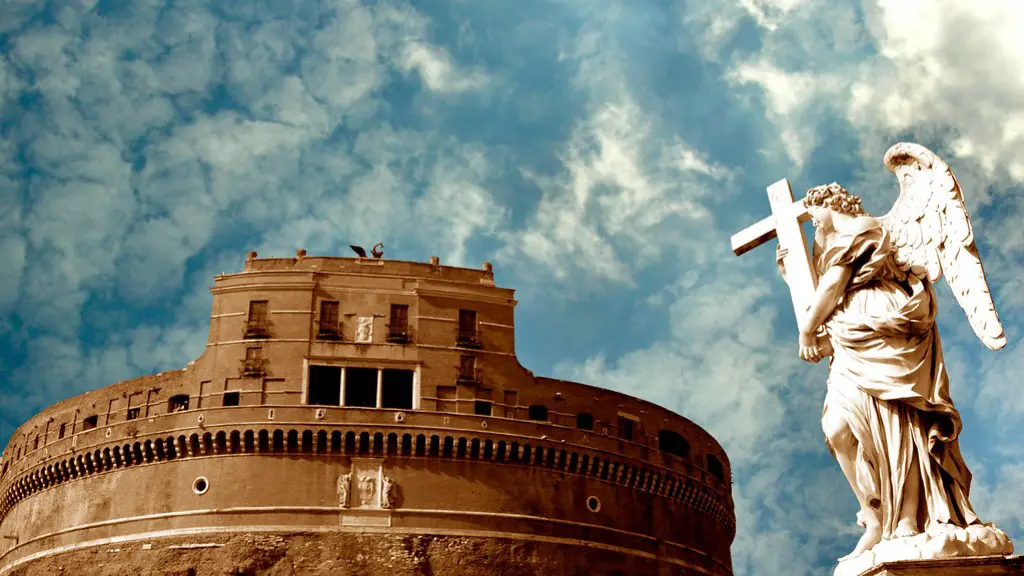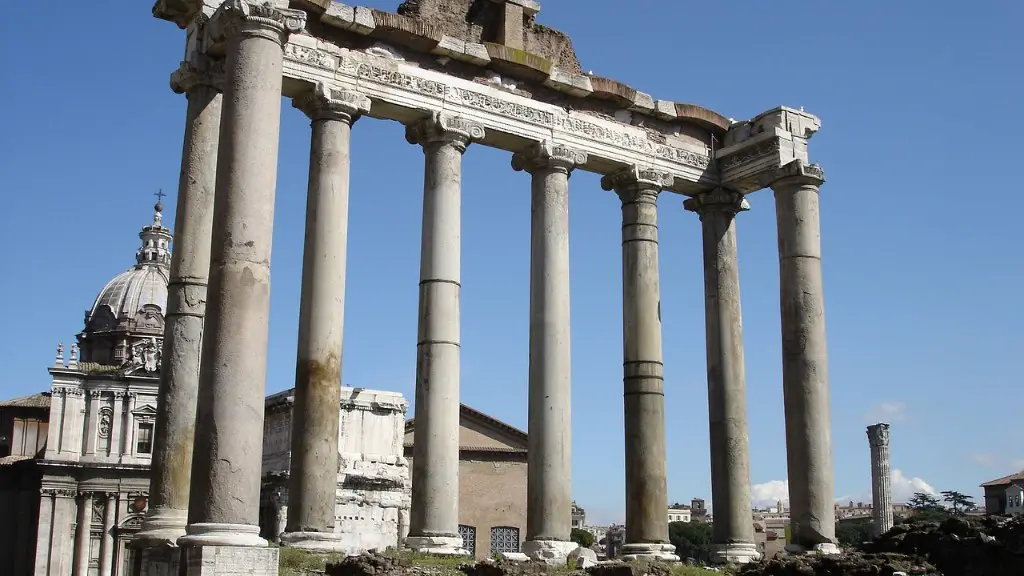Much thought has been given to the question of why ancient Romans are so famous. It is clear that the history of the Roman Empire contains some of the most famous and important people and events of human history. While it is difficult to fully explain the widespread fame of the Romans, there are several plausible explanations that offer insight into this phenomenon.
The geographical reach and military conquests of the Roman Empire played an important role in its broad historical fame. In just a few centuries, the Roman Empire had control over much of the known world – it spanned 3 continents, included multiple cultures, and influenced many corners of the world. With such a large and wide-reaching empire, it is not surprising that Roman people, stories, and achievements have been documented and remembered in such great detail over the centuries.
Another factor that likely contributed to the fame of the Romans is the longevity and solidity of their political and cultural structures. The development of the Roman Republic was a key step in this process, since it gave the Romans an enduring and adaptive governmental structure that could withstand the challenges of conquest, invasions, and shifting political winds. The government of the Roman Republic eventually became the model for later republics, from the United States to France.
The legacy of Roman law has also left a lasting impact on Western society. Towards the beginning of its influence, the concept of ‘natural law’ began to take shape, which states that all laws are based on immutable principles and must ultimately be obeyed by citizens. This concept has formed the cornerstone of many modern legal systems, and is a major source of the relevance that ancient Roman law still has today.
Finally, the Roman Empire saw a remarkable level of technological advancement, which was an essential part of its success. The use of aqueducts, viaducts, and public baths to supply public places with water, the invention of the arch, and the advancement of concrete engineering were just a few of the technological breakthroughs that allowed the Roman Empire to become one of the most powerful empires in history.
In summary, the fame of the ancient Romans can be attributed to a combination of factors, including their expansive conquests, the solidity of their political structures, their lasting legacy in law, and their incredible technological advancements. Together, these elements have resulted in the lasting fame of the Roman Empire.
The Impact on Art and Architecture
The Romans were known for their immense impact on the art and architecture of their time. Their grand and impressive structures, such as the Colosseum and the Pantheon, have become famous around the world, and have inspired countless imitations and imitations in later periods. This is not only due to their impressive size and scale, but also their unique and often highly decorative designs.
The Romans are also credited with the invention of classical columns and architectural styles, including the Corinthian, Ionic and Doric. These styles were adapted for use in a variety of contexts, from government buildings and temples to homes and monuments. These contributions to art and architecture have been highly influential and have shaped the way we think about building and aesthetics today.
Furthermore, the Romans were also well known for their sculptures and statues. The sheer variety of subject matter depicted in their works is a testament to their interest in the human form, and their figures are recognizable even today. These works range from realistic portraiture to religious and mythical figures which testifies to their unique cultural heritage. Many of these sculptures are considered masterpieces today and are studied and admired around the world.
Lastly, the Romans exercised their artistic prowess in the visual arts, particularly in fresco paintings. Not only were these murals beautiful to look at; they were also highly detailed and often depicted complex scenes. They were created to decorate the walls of public spaces, and so it can be said that the Romans used art to create a positive atmosphere in their society.
Religion and Education
The ancient Romans were known to be deeply religious and placed great value on the traditional gods of their pantheon from Jupiter down to Pluto, with the latter being associated with the cycle of life, death and the underworld. This religion was highly influential and involved elaborate ceremonies, rituals and festivals. This religion had a lasting impact on the beliefs of many European cultures and helped shape their perception of the divine.
In addition to their religious beliefs, the ancient Romans were also known for their intellectual pursuits, such as philosophy and literature. They have left behind some of the greatest works of literature of their time, including the works of Cicero and Virgil. Furthermore, the Romans were credited with introducing the concept of organized, public education, which was previously reserved for the wealthy and elite. This paved the way for increased literacy and knowledge in the population which influenced culture, politics, and science.
The Roman education system also provided many students with the opportunity to receive higher education, which was once again only available to the privileged few. This development allowed for new intellectual theories, discoveries, and inventions to spread to all corners of the empire.
Over time, the Romans also introduced new legal codes and philosophies, thus contributing to the development of law and becoming a powerful force in the world. In particular, the Roman Law was eventually adopted by the majority of the world, and still influences many modern legal systems today.
Social Structures
The society of the ancient Romans was highly structured, with a definite hierarchy and boundaries between different classes of citizens. At the top of the social structure was the emperor, followed by the senators and other elites. Below them were the equites and the plebeians, who had fewer privileges and more limited social mobility.
The Roman family was also an important part of their culture, and was seen as the cornerstone of the social order. This included the patriarch and matriarch of the family, their children, and the slave or servants they may have had in their possession. The head of the family would be responsible for the wellbeing of the family’s members, and took great pride in their position within the family.
The social structure of Rome also extended outside the family, with organizations and clubs that were established for the purpose of forming social bonds outside the home. These clubs and organizations provided many opportunities for the citizens to engage in recreational activities, or even to participate in business and politics.
Finally, the Roman social structure also involved forms of public entertainment, such as theater, music, and circuses. These events provided a respite from work and became popular as time went on. The Romans were known to have built some of the most impressive amphitheaters of their time, including the Colosseum, a symbol of the power and wealth of the Roman Empire that still stands today.
Political System
Much of the Roman Empire’s fame is due to its unique and sophisticated political system. This system was based on a complex blend of monarchy, democracy, and other forms of government. This combination of influences led to the development of significant public institutions, such as the Senate and the popular assemblies, which were crucial for the organization of the state.
Furthermore, the Romans were one of the first to introduce the concept of a ‘political career’, allowing individuals to climb the ladder of power and influence through their own hard work and loyalty to the state. This system also featured a variety of offices and titles, such as the imperator, consul, and censor, which gave individuals additional power and authority as they ascended the social ladder.
The Roman government also employed a form of public accountability, through institution of the fasces. This symbol was carried in the hands of magistrates and other important officials during official ceremonies and presented everyone with a visual representation of the power of the Roman government.
One of the main reasons why the Roman Empire was so successful was its relatively open and adaptable political system. This allowed it to remain resilient in the face of invasions, military loss, and changing political climates. It also provided an appealing model for later republics such as the United States, France, and other European countries.
The Legacy of the Ancient Romans
The legacy of the Roman Empire has had a profound and lasting influence on the world. Its system of government, its way of life, its legal and educational systems, and its religious beliefs have been passed down and influence our world today. This influence can be seen in the United States, which adopted a number of aspects from the Roman Republic, such as the idea of natural law, the separation of powers, and the concept of public education. The cultural legacy left behind by the Romans will continue to be studied and appreciated for generations to come.
The technological impact left behind by the Romans is also very impressive. From aqueducts, viaducts and public baths to the invention of arches and concrete engineering, it is clear that the Romans were ahead of their time and pushed the boundaries of technology. Furthermore, the incredible engineering feat of the Colosseum still stands today, a testament to the skill and prowess of the Roman Empire that continues to amaze and inspire.
The art of the Roman Empire is also highly iconic and recognizable still today. From their sculptures to their paintings and frescoes, the Romans left behind some of the most beautiful and enduring works of art of their day. These works remain admired and studied around the world, and serve as a reminder of the great artistic traditions of the Romans.
In conclusion, it is clear to see why the Romans are so famous today. Their expansive empires, their political and legal achievements, and their technological innovation have all contributed to the lasting fame of the Roman Empire. Furthermore, their artwork, religious beliefs, and educational systems all helped shape our western world and continue to be admired today.
